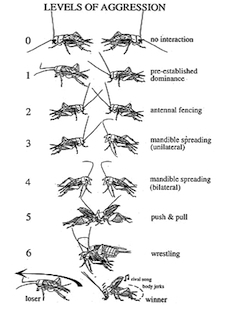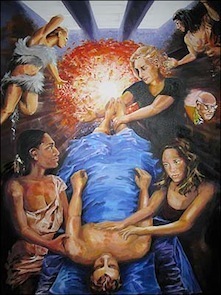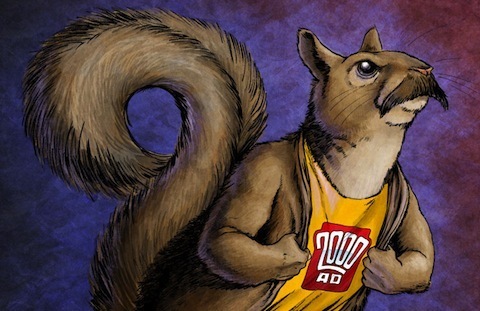Brendan I. Koerner's Blog, page 56
November 11, 2010
Entertain Us
I'm churning out the third draft of a major project this morning, so just some music to get you through the a.m. I saw the guy above, Eric Lewis, play last night in the basement of the Red Rooster. The bloke who introduced him said that he was essentially a cross between Prince and Thelonious Monk, a description that made me chortle. But the dude won me over with his four-song set, which he played while standing up. This Nirvana cover was his last number, and he crushed it. He also managed the neat trick of snapping a piano string on the low end of the keyboard, which is a testament to the ferocity with which he plays. Worth checking out live if he ever swings by your town, though I can also understand why you might prefer less aggressive versions of "Smells Like Teen Spirit."
November 10, 2010
Juiced
 It's no secret that the world of thoroughbred racing now mimics the very worst aspects of professional cycling, with so many contests determined by pharmaceutical aids. Less well-known is the impact that performance-enhancing drugs have had on other animal-centric sports, where doping has become commonplace despite the relatively meager financial rewards on offer. Pigeon racing, for example, has experienced scandals in which trainers have used illicit drugs in order to encourage either molting or rapid weight loss. And in the ultra-competitive world of Chinese cricket fighting, officials must now go to pre-bout extremes to ensure that the combatants haven't been doctored with dope:
It's no secret that the world of thoroughbred racing now mimics the very worst aspects of professional cycling, with so many contests determined by pharmaceutical aids. Less well-known is the impact that performance-enhancing drugs have had on other animal-centric sports, where doping has become commonplace despite the relatively meager financial rewards on offer. Pigeon racing, for example, has experienced scandals in which trainers have used illicit drugs in order to encourage either molting or rapid weight loss. And in the ultra-competitive world of Chinese cricket fighting, officials must now go to pre-bout extremes to ensure that the combatants haven't been doctored with dope:
The public house is designed to counter some of the more underhand tactics said to be popular among cricket trainers. The most sensational of these is doping, especially with ecstasy. Although a tripped-out cricket is likely to be a winning cricket, the drug's real target is the opposition: crickets are acutely sensitive to stimulants. They rapidly detect when their adversary is chemically enhanced and they respond by turning tail, so forfeiting the contest.
Every cricket slated for Boss Xun's casino spends at least five days undergoing detox in his public house. Part maximum security zone, part clinic, it was a four-room apartment stripped and retooled. Three rooms had multiply-padlocked steel gates, the fourth was a social space equipped with couch, chairs, TV and PlayStation, its whitewashed walls
decorated with colour close-ups—glamour shots—of crickets. Nobody drank or smoked. Two of the gated rooms were bolted storage areas lined with shelves on which I made out stacks of cricket pots. The third was unlocked and, like the casino, brightly lit. Boss Xun led us inside and I saw a long table and a row of men—owners and trainers there to care for their insects—each tending to a pot. Two assistants, men I recognized from the casino, were stationed across the table. One of them fetched the labelled pots from a cabinet behind him while the other closely observed the visitors. But what made the scene momentarily disorienting was that the men lined up at the table, silently intent on their crickets, were dressed identically in white surgical gowns and matching white masks.
Much more on the science of fighting crickets here. I, for one, cannot wait for the forthcoming publication of "The role of body size and fighting experience in predicting contest behaviour in the black field cricket, Teleogryllus commodus."
November 9, 2010
Before the Robots
The great pleasure in the clip above is not necessarily the music, but rather the bewildered faces of the German kids in the audience. Take a close look—most seem deeply unsure of how to react, yet still fully aware that they're bearing witness to an early flicker of greatness. I wish I could dig something up regarding Kraftwerk's view on blowing so many young Teutonic minds, but they're pretty much the opposite of loquacious. Seriously, you ever read aninterview with a member of Kraftwerk? Those man-machines are only slightly less reticent than J.D. Salinger.
Heaven to the Kaliai

Staying on the near-death experience theme from yesterday, I went and dug up one of my all-time favorite papers on the topic: Dorothy Counts' 1983 study of NDEs in New Guinea. Of particular note were the visions described by the Kaliai, a people who inhabit West New Britain. When they hallucinate about the Great Beyond in the midst of physical trauma, they tend to see a place that you and I might not consider so blissful:
In Andrew's near-death experience, Jakob's vision, and Wallace's dream, the land of the dead is perceived as a happy place. It is, however, not the pleasant garden reported by modern Westerners who return from death. Instead it is a land which is described as having factories and wage employment. It has an appearance which reminds me of the view approaching Los Angeles from the air. This view of the land of the dead is consistent with the belief complex known as cargo belief. Briefly, cargo belief involves the assumption that whites may not be fully human but may be, instead, spirit people or returned ancestors. Their possible non-human status derives from their appearance, for spirit people are thought to be pale or white, and from their technological superiority. Many Melanesian people, including the Kaliai, seem to assume that humans do not create their culture. Instead, language, knowledge, and technology are given to humans by the spirits and/or the ancestors. This is true for whites as well as for Melanesians; therefore, the goods that whites possess must be created by the spirits/ancestors/or God (depending on the content of the particular belief system) in the land of the dead which is rich with divinely given technology. The rituals which develop from cargo belief are intended to persuade the spirits or God to give villagers the same goods and technological knowledge that they have already given whites. The Kaliai land of the dead, is a place of factories, automobiles, highways, airplanes, European houses and buildings in great numbers, and manufactured goods.
This notion of cultural overlay on NDEs deserves further study. I'd be curious, for example, how the visions of the religious contrast with those of non-believers. And do people who've rejected their families still see their parents and siblings beckoning them down the long tunnel of light?
Re-reading the Counts paper actually got me thinking about my own version of heaven, and how it would certainly sharply differ from that described in, say, Dante's Paradiso. I'd like to go to a place where all of my gluttonous impulses can be satisfied with no consequence—Founders Dirty Bastard on tap and bowls the size of volcanoes stuffed with Planter's Cheez Balls. Of course, the fact that this is what I'd expect is probably a good indication that I deserve no such reward.
November 8, 2010
Near-Death Nation
 Readers who've been checking this space for a while may remember that I have a longstanding fascination with near-death experiences and the ways in which they can alter lives. And so I was struck by this line from a recent Wall Street Journal piece about researchers' continuing attempts to determine why, exactly, folks on the verge of death tend to have awe-inspiring visions of a culturally appropriate Great Beyond:
Readers who've been checking this space for a while may remember that I have a longstanding fascination with near-death experiences and the ways in which they can alter lives. And so I was struck by this line from a recent Wall Street Journal piece about researchers' continuing attempts to determine why, exactly, folks on the verge of death tend to have awe-inspiring visions of a culturally appropriate Great Beyond:
At least 15 million American adults say they have had a near-death experience, according to a 1997 survey—and the number is thought to be rising with increasingly sophisticated resuscitation techniques.
That's an aspect of medical progress that I'd never before considered: As more and more people survive trauma, we're going to have a lot more folks walking the streets who have been fundamentally changed by the hallucinations that often precede death. (For the record, I believe that these visions are the product of a neural mechanism that seeks to maximize a person's odds of survival by limiting their pain and panic. But I could be totally wrong.) That means millions more people are going to take radically different directions in life upon recovering from their injuries. And that could really be a net positive for the nation, as those who've undergone near-death experiences are often predisposed to take risks that can lead to greatness. My favorite case in point: James Michener:
During World War II, at age 40, he was assigned to the South Pacific as a naval historian to investigate problems on various islands and write reports. Observing the interaction of two different cultures and inspired by the beautiful setting of the South Pacific, he began to make notes with no specific goal in mind. A near fatal landing at dusk, on the Tontouta Air Base in French New Caledonia, changed his life. He recalls in his autobiography, "As the stars came out and I could see the low mountains I had escaped, I swore: 'I'm going to live the rest of my life as if I were a great man.' And despite the terrible braggadocio of those words, I understood precisely what I meant."
I remain convinced that medical science will eventually figure out a way to simulate the effects of near-death experiences, in order to provide psychological therapy to people suffering from depression and malaise. But at present, as the WSJ notes, the only way we can do this is by either applying great gobs of pressure to the brain, or administering Special K. Tough to foresee the FDA approving either one of those methods.
(Image via BBC Local Cambridgeshire)
November 5, 2010
"Just Sweat Me Like Moneypenny"
Major projects and chores all piled up today, so please sustain yourself on one of the few songs in music history to explore the sexual tension that existed between James Bond and M's secretary. Saucy.
November 4, 2010
The Wizard of Rub
Many moons ago, I found myself at a basement party where a band named after a Dungeons & Dragons creature provided the entertainment. The star of the show was a diminutive man with a bushy beard and a strange contraption draped across his chest. It looked to me like a badly wrought piece of armor, but that assumption was revealed to be flawed once he started rubbing two metal sticks across the garment's surface. Oh, what beautiful noise that musician created simple by scratching himself vigorously. And ever since, I've counted myself a tremendous fan of the rubboard.
Adding to the instrument's allure is its DIY backstory. Though obviously inspired by the freestanding washboard, a longtime fixture of so-called hot music, the draped-over-the-torso rubboard is of more recent vintage. Its alleged creator was none other than the legendary accordionist Clifton Chenier, whose brother Cleveland would go on to become the Paganini of the corrugated instrument. The story of Chenier's prototyping process is told here:
Because [Cleveland Chenier] was employed at Port Arthur's Gulf Oil plant, he easily located a metalworker who could bring that concept into being. As Clifton relates in a videotaped interview with Chris Strachwitz:
They used to tie a string around it, you know, and play it around the neck. So I went to a white fellow down there at the Gulf Refinery. I told him, I said, "You got some tin?"
He say, "Yeah." So I got down on the ground, in the sad, and I drawed that rubboard.
And I said, "Can you make one like that? You know, with a collar plate?"
He say, "Sure, I can make one like that." And he made one."
Fabricated from a single piece of metal by a Cajun welder named Willie Landry (the "white man" of the preceding anecdote), it featured two smooth tabs designed to curve over each shoulder—what Chenier calls the "collar plate." Supported in this fashion, the large corrugated rectangle that formed the main playing surface could hang freely over the entire front of the torso. Such an innovation offered a wider and longer board on which the percussionist could improvise his rhythmic strokes. It also liberated him from having to use one hand to grip the washboard or to steady it as it hung awkwardly from a string. Therefore, he could fully engage himself, using both his hands to scrape the board while he dance and weaved with the music.
I like this tale not only because I love me some rubboard, but also because it offers a intriguing model of innovation—one in which there is no schism between inventor and end user. This seems to be common practice in the world of music, perhaps because there's a lot of overlap in the mental skills employed by musicians and engineers. I have no doubt, for example, that Les Paul could've built some mighty fine bridges if he hadn't devoted his energies to making solid-body electric guitars instead. But it's a rarer feat in other creative realms—I don't believe that Henry Mill, for example, had any intention of using the first typerwriter to bang out the Great English Novel.
Fun rubboard fact: Willie Landry's son is now America's preeminent rubboard maker.
November 3, 2010
Varmints on the Ascent

It is a good time to be a squirrel in the United States. For starters, the bushy-tailed rodents are no longer coveted by hunters, to the great distress of many aging sportsmen. The latest numbers out of Pennsylvania don't lie:
The wider availability of squirrel species has not been enough to buoy squirrel hunting participation. According to the Game Commission's annual game-take survey, the number of Pennsylvania squirrel hunters dropped from 615,000 in 1983 to 150,000 in 2009. Hunters' take of squirrels plummeted from 2.2 million to 635,000 over the same span.
"It's not because of a shortage of squirrels," Edwards said. "And from a public land standpoint, there is lots of room to hunt them. There is opportunity, but we're not promoting it. It's a great way to start kids."
For those squirrels that do have violent run-ins with hunters, however, there is hope for rehabilitation should they survive the experience. The wounded critter must hope that they end up in the care of Maria Strouse, a North Carolina woman who operates a rehab organization for squirrels. Though she spends thousands of dollars each year nursing her tiny patients back to health, she strongly recommends against keeping squirrels as pets. It seems the rodents don't always make their appreciation known:
"I have no squirrel pets," Strouse says. "And by the end of squirrel season I can't wait until they are gone. They scratch, and when they go into the release cage they bite, don't want anything to do with me. When they reach sexual maturity, they can get very aggressive. My hands are always sore from hand-feeding these guys. They tear you up. They jump on my head, they climb down my face, and I have to wear goggles all the time."
The self-proclaimed "Agent Squirrel" certainly gets points for stoicism. After a few days of getting our flesh torn up by ungrateful squirrels, we'd definitely be looking to turn our charges into stroganoff.
(Image via 2000AD Covers Uncovered)
November 2, 2010
The Logic of Protest
If you haven't already, be sure to hit your local polls before the day is through. I'll be taking Microkhan Jr. into the voting booth this afternoon, and I'll let him pull the lever at the end (though he won't actually get to make any ballot selections).
For the umpteenth time since I turned 18, I will once again be voting in a state and district where there's not a single close contest. New York's gubernatorial race was decided long ago, and the odds of my 20-term congressman getting ousted are between nil and zero. As a result, I'm seriously considering casting a couple of protest votes this time, opting for third-party candidates whose entire campaigns are basically just exercises in futility. But I keep on asking myself, What's the logic in protest voting? I have no expectation that any third-party candidates will garner enough votes to nudge the victors' behavior. And I fear that most of these candidates have ulterior motives for running—namely to heighten public awareness of their personal brands, with an eye toward cashing in once the election season is over.
I'd be curious to hear from the Horde: Have you ever cast a protest vote? If so, why? And if not, do you believe that protest voting is deeply illogical, and a waste of one's democratic rights?
Crowns Are People, Too

Much is made of the way in which the Soviets scored themselves some really nice artworks in the waning days of World War II, scooping up the priceless paintings and statues that the Germans had looted on their doomed march toward Moscow. But our side had some sticky fingers, too, to the great consternation of Hungary. Less than a week before V-E Day, American soldiers stumbled across a Bavarian train that was carrying The Crown of St. Stephen, the symbol of royal Hungarian authority since the early 11th century. Aware that the Iron Curtain was about to descend on the traditional Land of the Magyars, we spirited the crown back to these shores and locked it up in Fort Knox—not because our government had any designs on selling the artifact, but rather because we knew that it would eventually come in handy as a bargaining chip. Even in May 1945, the realities of Cold War politics were well-known in the halls of power.
The theft stung Hungary not only because of the crown's sentimental value, but also because the object actually had legal status. A 1965 piece on the controversy explains:
The crown was always far more than a piece of jewelry, as most crowns in the kingdom were. It had what was called a "legal personality," manifested, among other things, in such traditions as the courts of justice pronouncing verdicts "in the name of the holy crown," rather than in the name of the king.
We did eventually return the crown while Hungary was still under Communist rule, in exchange for little more some warm feelings. That seems like a pretty weak haul, given that we initially refused to exchange the crown for an actual human life.
I also wonder whether the Hungarians ever went so far as to plan a rescue operation. Perhaps they could have succeeded where Auric Goldfinger failed.




